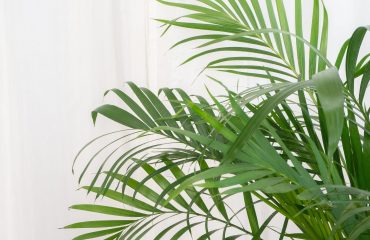HOW TO CARE FOR A HOYA HOUSEPLANT

Hoyas known as wax plants or porcelain flowers, are seeing a surge in popularity as houseplants—and all for good reason! Also commonly referred to as wax plants, Hoya plants are popular for their thick, waxy leaves and beautiful star-shaped flowers.
- Hoya carnosa
Why it’s special: This is the classic wax plant from your childhood. Dark green, large, almond-shaped leaves grow on long vines, which will eventually put out creamy flower clusters.
What it likes: medium to bright indirect light. Less is more when it comes to watering; we like to wait until the leaves pucker slightly.
What it dislikes: Direct sun, artificial light, dark corners. - Hoya carnosa variegata ‘Tricolor’
Why it’s special: Everything you love about the classic carnosa, but with leaves lined in white and pink, in addition to the green. Occasionally, this Hoya will have stems of bright pink and will shoot out solid white leaves. A stunner.
What it likes: This is one of the pickier Hoyas. It needs very bright, but indirect light, to thrive. Also enjoys heat and high humidity. Follow watering procedure for normal carnosa, above.
What it dislikes: Low-medium light, cold drafty windows. Particularly sensitive to over-watering. Portlanders, be sure you have a bright enough spot to keep this one happy! - Hoya carnosa ‘Rubra’ aka ‘Crimson prince’
Why it’s special: sometimes called Krimson princess or krimson queen, this Hoya carnosa cultivar has variegated foliage that includes cream, yellow, and pink, in addition to bright green.
What it likes: Like its variegated cousin, the tricolor, this Hoya needs a bright spot where it won’t receive direct sun. Water like a carnosa.
What it dislikes: Low-medium light, cold drafty windows. Particularly sensitive to overwatering. - Hoya obovata
Why it’s special: this Hoya has incredible dark green, round, lightly speckled leaves. Compared to many Hoyas, this one is relatively fast to grow and sets flower earlier than most.
What it likes: This is one of the hardier Hoyas we’ve encountered. It still wants bright light, but is tolerant of medium light.What it dislikes: Over-watering; those big leaves hold a lot of water. Wait until it puckers before watering. Also dislikes direct sun, and dark drafty corners. - Hoya keysii
Why it’s special: Those leaves! Spade-shaped, soft to touch and slightly furry (the technical term is pubescence), this Hoya also shoots out vines that grow in a more upright habit than the carnosas.
What it likes: This one is especially succulent – likes long dry spells, nice bright light and high humidity.
What it dislikes: Dark corners, over watering (this one is particularly sensitive – it will get mushy), direct sun.
Exposure
Hoyas need bright, natural light to do their best. Mine sits on a table in the corner next to a sliding glass door with a north exposure & a tall, narrow window with an east exposure. We get a lot of sun all year long in Tucson so that’s the sweet spot for mine. I rotate it every couple of months so it gets the light evenly all the way around.
Watering
I water mine when it dries out. Hoyas aren’t technically succulents but are succulent-like with those fleshy, waxy leaves. In the summer my Hoya obovata gets watered every week. In the winter I water it every 2 weeks. When I repot it into a larger container with my special soil mix, I’ll water less often.
Temperature
If your home is comfortable for you, it’ll be so for your houseplants too. Just be sure to keep your Hoyas away from any cold drafts as well as air conditioning or heating vents.
Soil
Hoyas, aka Wax Plants, love a rich mix with excellent drainage. All the mixes & amendments listed below are organic.
POTTING SOIL
I’m currently using Smart Naturals because of its high quality ingredients. It’s great for container planting, including houseplants.
REPOTTING/TRANSPLANTING A HOYA PLANT
This is best done in spring or summer; early fall is fine if you’re in a warm climate. Hoyas like to grow a bit potbound so don’t rush to repot yours if it’s dong fine.
Regarding transplanting & repotting, don’t think your Hoya will need it every year. Like orchids they’ll bloom better if slightly tight in their pots so leave them be for a few years.
I hadn’t repotted my large variegated Hoya for 3 years & did it because the soil was way down in the pot.









